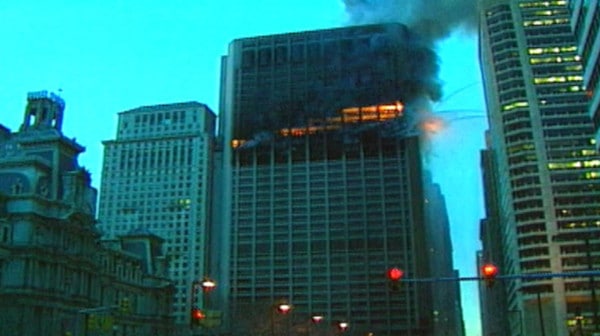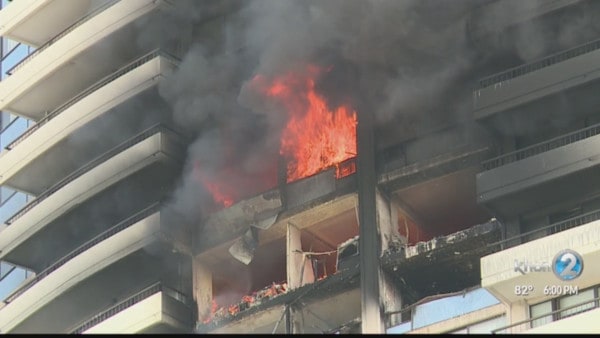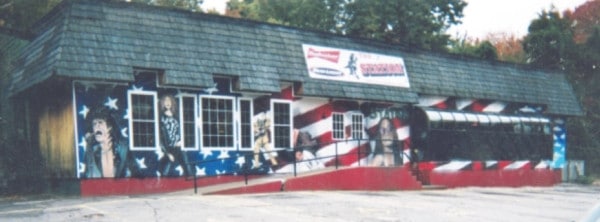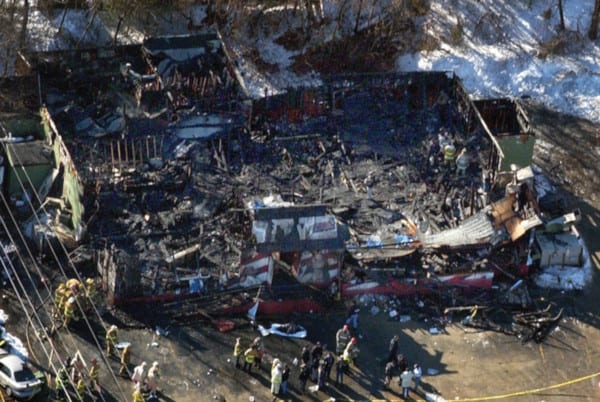A look at the history of life safety code and fire-sprinkler installation and retrofits
Nearly every new commercial building constructed today has fire sprinklers; a new apartment complex, retail distribution center, office high-rise, hospital, and many, many more types of facilities are now commonly built with them. Sprinklers are installed in these new structures depending on the requirements set by model occupancy codes and the local and state governments that adopt them as laws.
But even when the codes and ordinances allow a building to be put up without sprinklers, owners often choose to install them anyway, as the model codes offer over 125 exceptions to other required (and expensive) life safety requirements to incentivize sprinkler installation. Simply put, sprinklers are the norm in new commercial construction.
Existing buildings, however, are another story. Depending on a structure’s age, size, and purpose, it’s hit or miss whether it has a fire sprinkler system – and whether local law requires owners to retrofit sprinklers.
Why were so many buildings built without sprinklers?
Fire sprinkler systems have been around for over 140 years, even before the initial National Fire Protection Standard organized its first official requirements in 1896 – and the model building codes in the US have been constantly developing ever since. These model codes began to be derived from city building codes starting after World War I, though several weren’t developed until after World War II. And during their initial phases, automatic sprinklers weren’t the priority.
Instead, the primary method of fire protection in the model codes during the majority of the 1900s focused on passive fire protection that involved using fire barriers to create compartments. Compartments are what the current codes call “fire areas” – fire-rated walls, floors, and ceilings that typically divide a building into 12,000 square-foot areas for fire control. In those early days, the use of automatic fire sprinklers to provide active fire protection was primarily limited to manufacturing facilities and large storage areas.
How did fire sprinklers gain the widespread acceptance they have today?
Fire sprinklers systems, aka active fire protection, got a boost in model building codes in the early 1970s after the US federal government commissioned a study to investigate a massive fire problem in the US – one which claimed over 10,000 lives a year and caused exponentially more injuries. The investigation by the National Commission on Fire Prevention and Control resulted in the 1973 report “America Burning” which spurred major changes and recommendations, including:
1. The creation of the U.S. Fire Administration, the National Fire Academy, and the National Fire Incident Reporting System, among other safety research and education organizations.
2. All local governmental units in the United States having and enforcing an adequate building code and fire prevention code. This created the fire marshal office in states and initiated states adopting building codes based on model codes.
3. New model codes specifying the use of automatic fire sprinkler systems and fire alarms for high-rise buildings and low-rise buildings in which many people congregate, as well as in all facilities for the care and housing of the elderly. This became the pivotal turning point for the adoption of sprinklers in high-rises, assembly buildings, hotels, and nursing homes.

The evolution of the high-rise sprinkler retrofit
High-rise buildings (any structure over 75 feet) were not mandated to have fire sprinklers until the 1970s. By the middle of that decade, however, “America Burning” spurred the adoption of the model codes that offered “trade-ups” for adding sprinkler systems into new high-rises; building owners could reduce other, expensive and passive fire code requirements if they installed automatic sprinklers. And by the mid-1980s, all new businesses of certain types and residential high-rises were required to be sprinklered per the national model codes.
This period also marks the beginning of retrofitting existing high-rises with sprinklers in major cities. While any new high-rise is required to be sprinklered, not every model code agrees on what to do with existing buildings. The 2018 editions of NFPA 101: Life Safety Code and NFPA 1: Fire Code require all existing high-rises to retrofit sprinklers within a 12-year period, whereas the 2018 edition of the International Fire Code has text stipulating optional adoption over a 12-year period.
From the 2018 edition of NFPA 101 (Existing Apartment Occupancies)
31.3.5.12.1 All high-rise buildings, other than those meeting 31.3.5.12.2 or 31.3.5.12.3, shall be protected throughout by an approved, supervised automatic sprinkler system in accordance with 31.3.5.2.
31.3.5.12.2 An automatic sprinkler system shall not be required where every dwelling unit has exterior exit access in accordance with 7.5.3.
31.3.5.12.3* An automatic sprinkler system shall not be required in buildings having an approved, engineered life safety system in accordance with 31.3.5.12.4.
From the 2018 edition of NFPA 101 (Existing Business Occupancies)
39.4.2 High-Rise Buildings.
39.4.2.1 All high-rise business occupancy buildings shall be provided with a reasonable degree of safety from fire, and such degree of safety shall be accomplished by one of the following means:
(1) Installation of a complete, approved, supervised automatic sprinkler system in accordance with 9.7.1.1(1)
(2) Installation of an engineered life safety system …
The engineered life safety system alternative to sprinklers in 39.4.2.1 may include partial coverage from sprinklers and/or some combination of smoke detectors and controls, elevators, compartments (fire rated walls and floors, etc.), or “other approved systems,” and must be installed by a “a registered professional engineer experienced in fire and life safety systems design” and be approved by the authority having jurisdiction.
Since various local governments use these codes as a model and adopt them in various iterations, whether a high-rise must be retrofitted depends on where the building is located. The push to introduce new laws to retrofit sprinklers often comes after an avoidable tragedy, though new ordinances can be met with opposition from building owners and residents who have concerns about the cost involved.
For example, Pittsburgh Fire Chief Darryl E. Jones began advocating for a retrofit sprinkler law after a May 2017 fire in a high-rise killed one person, injured several others, and shut down the building for a time. The city council delayed a vote last fall on a proposed ordinance requiring buildings six stories or more to retrofit sprinklers within 13 years, however, after complaints from residents and owners who were concerned about the expense.
A fire in an unsprinklered building can be far more expensive than a retrofit, however. Another high-rise fire at the Marco Polo Condominium in Honolulu, HI on July 14, 2017, killed four residents and damaged 210 units, causing over $107 million in damage. This tragedy resulted in two bills that give the city’s high-rise building owners “five years to do a fire safety evaluation,” and either pass it or retrofit a sprinkler system.

The evolution of the assembly occupancy retrofit
Assembly buildings with high occupant loads, low lighting, late-night operations, alcohol consumption, and no fire sprinklers have a deadly history in the US. Individual nightclub fires that resulted in hundreds of fatalities, such as the 1942 Cocoanut Grove fire in Boston (492 dead) and the 2003 Station Nightclub fire in Warwick, Rhode Island (100 dead), have incrementally driven revised fire sprinkler requirements. In the current 2018 editions of US fire codes like NFPA 1 and the International Fire Code, the occupant load threshold that requires new assembly facilities to have fire sprinklers has been lowered from 300 occupants down to just 100.
Retrofitting existing bars, nightclubs, and restaurants is also required by the 2018 International Fire Code if the fire area where alcohol is consumed is over 300 occupants. In contrast, the 2018 edition of NFPA 1 sets a threshold of just 100 occupants for existing clubs – but note that this document only covers nightclubs, dance halls, and discotheques, whereas the 2018 International Fire Code’s requirements also cover bars and restaurants.
From the 2018 International Fire Code
1103.5.1 Group A-2. Where alcoholic beverages are consumed in a Group A-2 occupancy having an occupant load of 300 or more, the fire area containing the Group A-2 occupancy shall be equipped with an automatic sprinkler system in accordance with Section 903.3.1.1.


Expanded fire safety requirements have saved thousands of lives
The “America Burning” report drove drastic changes and improvements to fire safety in the US, notably revising the model codes to focus on active fire protection measures (sprinklers) instead of passive protection strategies (compartments). The result?
Forty-plus years of model building and fire code development that has reduced the number of fire fatalities from over 10,000 per year to less than 1,000.
In this relatively short history, many other events have shaped codes, local politics, and fire sprinkler installation standards, which continue to be revised according to best practices. And more and more local governments in the US are beginning to adopt model codes and standards that call for retrofitting existing structures with sprinklers – making them exponentially safer places to work, live, play, and gather.
Stay tuned for a deeper examination of fire sprinkler retrofit requirements, including a detailed look at installation considerations for different types of buildings and the standards that govern retrofits.
If you’re looking to buy components for a fire sprinkler system, check out QRFS’s selection of commercial sprinkler heads, as well as our sprinkler gauges, valves, switches, and other system components.
If you have any questions about retrofitting an existing structure or need help finding an item, give us a call at 888.361.6662 or email support@qrfs.com.



Morning
Thanks for taking my call last. I am in need of a paid professional assessment of our risk as it relates to a renovation in 2014.
All for safety but can’t afford a retrofit of the whole building. Proposed partial in basement and code official rejected it.
Occupancy is 135 in fine dining.
Happy to meet with your team.
Please reach me anytime at 201-745-7518.
Thanks
Regina
Regina — Unfortunately, QRFS does not directly provide complete risk assessments or fire sprinkler retrofit services. That said, if you want a fire protection professional to examine your situation and have a specific question (such as “why was this rejected?), you can try our Ask a Fire Pro service. Click the link to submit your question with some information about your building or system, and a fire protection professional will provide an answer based on standards and codes. Our pros include AHJs, contractors, engineers, and code experts with 150+ years of combined experience!